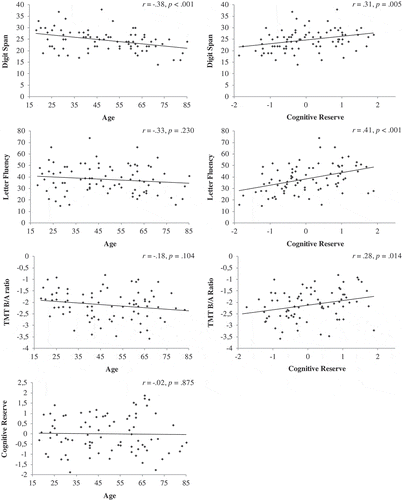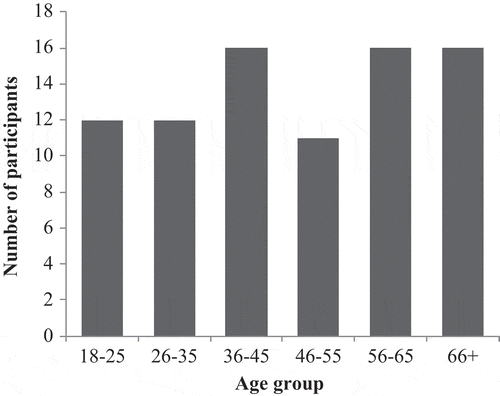Figures & data
Table 1. Effects of age, cognitive reserve (CR), and executive function (EF) measures on memory performance.
Figure 2. Plots of correlations (Pearson) between age, cognitive reserve (CR), and the three executive function measures: Digit Span, Letter Fluency, and Trail Making Test B/A ratio (TMT B/A ratio).

Table 2. Pearson correlations between age, executive function (EF) measures, cognitive reserve (CR), and strategy measures.
Table 3. Effects of age, cognitive reserve (CR), and executive function (EF) measures on strategy use.
Table 4. Prevalence of use of observed and self-reported memory strategies during encoding of the strategy observation task (SOT) and their correlations (Pearson) with age, cognitive reserve (CR), and executive function (EF) measures.
Table 5. Prevalence of use of self-reported memory strategies during encoding of the verbal paired associates (VPA) and their correlations (Pearson) with age, cognitive reserve (CR), and executive function (EF) measures.

